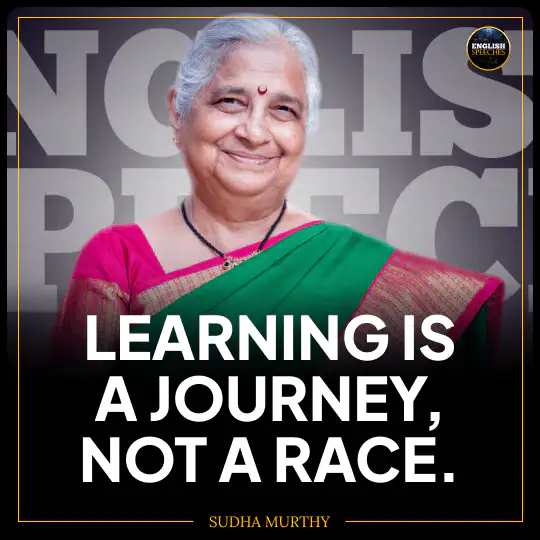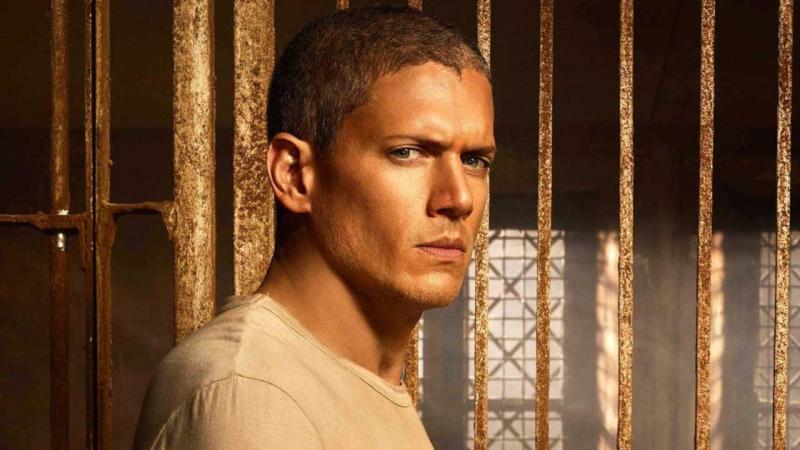Learn English with Sudha Murthy. In this historic 2024 Rajya Sabha speech, author and educator Sudha Murthy shares heartfelt reflections on women’s health, cultural heritage, and civic responsibility. With warmth, clarity, and deep cultural roots, she shows how tradition and service can shape a stronger India.
Who This Speech Is For
Learners interested in Indian politics, social service, and cultural heritage.
Those who admire strong female voices in public life.
Intermediate to advanced learners wanting real-world vocabulary and context.
How This Speech Helps Your English
Observe how humility and passion shape a public speech.
Expand vocabulary in public health, heritage conservation, and women’s empowerment.
Learn how anecdotes, personal stories, and Sanskrit quotes enrich language use.
Understand tone variation when addressing serious vs. inspirational topics.
Why This Speech Matters
Spotlights critical health issues affecting women, especially cervical cancer.
Advocates for cultural pride and preservation of India’s heritage.
Demonstrates the power of lived experience in legislative platforms.
Inspires listeners through lifelong dedication to education, service, and storytelling.

”Culture is our treasure
Download available
for Plus Members
PDF Transcript
Access the full speech in an
easy-to-read PDF format.
Audio Version
Listen and download clear,
high-quality MP3 recordings.
English Lesson
Includes vocabulary
and grammar practice.
Offer ends in:
Offer ended.
Transcript
Sudha Murthy: So, when I have to start? I don’t know. This is my first speech. It may not be a maiden. How much time do I have, sir? Five minutes. Okay. I am not a politician, and I do not know how to talk for or against, neither of them. English. I have been chosen by the… nominated by the President of India. I’m really grateful to her, and of course our prime minister, who announced my name on 8th of March, which is the Women’s Day, as a Nari Shakti. I always worked for poor, and I’m always on the field, so my experience is entirely different than both sides of the house. I have been given only five minutes, and being a teacher, for me five minutes is an extremely small slot. However, I’ll try to do only two things. I’m also an author, so I always like to give analogy from shlokas and describe. It may not be possible. Maybe sometime later if you give me a maiden speech of 15 minutes at least, I’ll be able to do, sir. My expertise in my field. Yatra naryastu pujyante ramante tatra devata. That’s what our ancestors say. Where women are respected, that is a place where gods reside.
And I want to tell you, the most important thing for woman… women in general is her health, because she always neglects her health and takes care of the family. And because of that, many women suffer in real life with cervical cancers, and they will come to the hospital only in the fourth stage or third stage. And being a daughter and a sister of a doctor, I’m aware of this, and I worked in my last 30 years with Infosys Foundation on this particular area. And that I want to give a suggestion. There is a vaccination which is given to girls between the age of 9 to 14 known as the cervical vaccination, which can… If the girls take that, it can be avoided. May I request that to the House that we should incorporate that vaccination for the benefit of our girls, because prevention is better than cure.
My father, being a doctor, always used to tell me, “When a woman dies, when a mother dies, in the hospital it’s a count plus one, but for the family, a mother is lost forever.” Maybe a man can get another wife, but children will never get another mother. Mother plays an important role. And cervical cancers are more in the later part of life. So, I request that our government should look into this matter. And they have handled a very big vaccination drive during COVID, so this may not be very difficult if you can vaccinate our girls in the teenage, 9 to 14. This is my first point…
Shri Rajeev Shukla: Who has developed the vaccine?
Sudha Murthy: This vaccination is developed in the West for a long time, sir. It is already given for the last 20 years. I tried one batch in my time, 10 years back, with the government of Tamil Nadu with K. Shanta, the director of the Adyar Cancer Institute. It worked very well. So it is not expensive, I’m sure. Well, you know, today it’s 1,400 rupees for a person like us who are in the field. But if the government intervenes and negotiates, it can be… And it’s… any business is a win-win situation. He also should make certain money. But you can bring it to 700, 800 rupees. And we have such a large population, sir. It will be benefiting for our girls in future.
Shri Rajeev Shukla: Ashwini, would you please convey to the health minister, Naddaji?
Sudha Murthy: Yes, sir. The second point, which is very dear to my heart, is I’m going to talk… I may exceed one or two minutes, sir?
Shri Rajeev Shukla: Please, please, ma’am. No problem. Yeah.
Sudha Murthy: That is regarding tourism in India. Sir, we always think only Ajanta, Ellora, Brihadeeswara and Taj Mahal are few things which everybody should see. That’s really not true, sir. Our country is vast and there’s a very famous saying in the… you know, in, in Subhashita that says, Bahu Ratnani Vasundhara. Mother Earth has many, many diamonds and we always neglect and care only for one.
Similarly, in India, we have 42 World Heritage sites, but we have 57 pending. And we should bother about those 57. And some of them I want to tell because there is no time. These are the very important sites. I have gone personally and visited. Being a daughter and granddaughter of a schoolteacher and a history teacher, for the last 60 years, sir, I’ve done a lot of research in our own culture, our own temples, monuments in India. And whatever I have done, in a nutshell I want to give.
There’s a marvelous statue of Bahubali at Shravanabelagola, which is a gem. It is in Karnataka. There are a group of monuments in Mandu, in Madhya Pradesh, who are very, very beautiful. There are the caves or the prototyping of any temple you take in India, its prototyping is done in Badami, Aihole, Pattadakallu in Karnataka, northern part of Karnataka where I belong. I’m very proud about it.
See Lingaraja Temple, see any temple in India, Konark Temple, everything, prototyping is done in 575 AD in Karnataka. These three places, which are not in the World Heritage Site. You have… If you go to east, you have Tripura state and there are fantastic sculptures known as Unakoti. Nobody knows who has done that, 1500 years old. Then you have Natural Roots Bridge in Meghalaya in the eastern part of India which is God’s gift to us. We go to other countries and we see, but we never value. Because we have diamond in the hand, we search for the broken glass pieces.
There are a complex of the temples in Srirangam and people must have… some of them must have seen from South India. I’m sure northern and eastern part of India, people might not have seen. They are marvelous. They’re as good as Brihadeeswara Temple of Thanjavur, which is a World Heritage Site. There are beautiful Mughal Gardens in Kashmir. We always go and see the film shooting, but we never realize they’re not in the World Heritage Sites.
So the advantages of putting them on the World Heritage Site, number one, the package should be done very well so that people can come and see them. The package should be… conveniently should be done so that you should have good toilets and good roads so that the tourists can come. It will increase our revenue in our own country.
There are so many advantages are there that I will do in my maiden speech. We have a beautiful desert garden, Rann of Kutch, and people only can see in certain months of the year, and we should take advantage of that. We have… Buddha was a great person and we are very proud. Whichever country I go, they ask me, “Are you from the land of Buddha?” I always say yes. He preached his first sermon in Sarnath, very, very near to Varanasi. The group of old monuments at Sarnath, which are 2500 years old. It is not in the World Heritage Site.
The Lothal of Gujarat is equivalent to Mohenjo-daro Harappa of Pakistan. We can’t go there, but we have Lothal and Dholavira. Dholavira is a World Heritage Site, but not Lothal. Lothal was a big port and how the ships used to come, you should go and see. It should come in a World Heritage Site.
There is a beautiful island on the river Brahmaputra in Assam, Majuli they call. Maybe my spelling might be wrong… Majuli. Sir, it is… If you would have seen in some other country, they would have made this number one destination for wedding or even for entertainment or even to go and enjoy. But 90% of the people are not even aware of this.
When you see the old parliament, you say, “Oh, these people Westerners have come and they have built this one. People from… architects from England, UK, they came and built it.” Sir, it is nothing but if you see the prototyping of that 1000 years back, built in Madhya Pradesh from Gwalior 30 kilometer, it is called Mitaoli. It’s a Chausath Yogini temple. It’s exactly the replica of that, but in a prototyping, sir. There’s a Padavali and Mitaoli. There’s one more set of temples which were saved because of… on the Chambal River, because of the dacoits, but they are world-class temples.
The list is unending, but I want to conclude with the famous gumbaj of Karnataka. That is Gol Gumbaz. It was ruled by the Adil Shahis in 1400 to 1685. And it’s one of the marvelous things India has produced where you can have the echo of seven times.
My list is 57, but my time is limited. So sir, I… this is an opportunity. As a young girl, I used to look at Rashtrapati Bhavan. I used to look at Rajya Path. I used to always feel lucky are those people who stay there, who go there, who can talk, who can express. I never knew one day will come to me in my life, I can stand and talk about what I believe in.
I want to conclude with a shloka which our ancestors have taught us. Or my grandfather has taught when I was young. Whatever work you do, better do it with your mind, with Buddhi and with 100% concentration. We are in a country where there is so much diverse culture, but still we are all one, like five fingers make a mushti. We all have that character, which is very much an Indian character that we may differ in dress, food, language, but we are all one.
I want to serve in my tenure Rajya Sabha with one single motto, Kayena vacha manasendriyairva buddhyatmanava prakriteh svabhavat, karomi yadyat sakalam parasmai Narayanayeti samarpayami. It’s not my husband Narayan Murthy… it is Narayana the God, or the God whom you believe. It need not be Narayana, it could be anybody.
So with a single-minded, with my mind, with my Buddhimatta, with my concentration, with my whatever the age I have, I am 74… going to be 74, but God willing, I will put my 100% in Rajya Sabha and work.
Jai Hind. Jai Bharat Mata.






